You'll Be Thankful You Made These Retirement Decisions
What are you thankful for this holiday season? Family and friends? A few days off work? Perhaps your health? Good fortune in your career? You may have many blessings for which you’re thankful.
Many of our blessings and fortunate circumstances are determined by choices we made earlier in life. Your good health may be a result of your healthy lifestyle. Your financial stability is likely a result of your career choices and your savings habits.
What decisions can you make today that you will be thankful for in the future? Below are three actions your retired self may appreciate. If you’re approaching retirement and haven’t taken these steps, now may be the time to do so.
Adjust your allocation and minimize risk.
Are you feeling less comfortable with market volatility as you approach retirement? That’s normal. Most people become more risk-averse as they get older. When you’re young, you have a long time horizon. You have plenty of time to recover from a loss in the market, so you can afford to take some risk.
However, as you get closer to retirement, your time horizon shortens. You don’t have as much time to recover from a loss, so a market downturn may cause more anxiety and stress than it did in the past.
This may be a good time to review your overall allocation and possibly adjust to a more conservative strategy. Look for ways to pursue growth without exposure to high levels of risk. In addition to adjusting your allocation, you may want to explore retirement vehicles that offer growth potential without market risk. Your risk tolerance changes over time, so your allocation should change as well.
Maximizing tax-deferred savings.
If you’re like most Americans, you probably use some kind of tax-deferred vehicle to save for retirement. Accounts like IRAs and 401(k) plans are tax-deferred. You contribute money and then allocate your funds according to your goals.
In a tax-deferred account, you don’t pay taxes on your growth as long as the funds stay inside the account. Depending on which account you’re using, you may pay taxes on distributions in the future. However, the deferral of taxes inside the account may help your assets compound at a faster rate than they would in a comparable taxable account.
In 2019, you can contribute up to $19,000 to a 401(k), plus another $6,000 if you are age 50 or old. You can also contribute up to $6,000 to an IRA, with an additional $1,000 if you are 50 or older.1 Look for ways to trim your budget so you can put more money in your retirement accounts. Your future self will thank you.
Work with a professional.
Have you resisted using a financial professional for retirement income advice? Now may be the time to change your thinking, especially if you’re nearing retirement. A financial professional can help you adjust your allocations, plan your retirement income, develop a savings strategy, and even implement a personalized plan so you stay on track to hit your retirement goals. If you haven’t consulted with a financial professional about your retirement, now may be the right time to do so.
Ready to nail down your retirement strategy and make decisions you’ll be thankful for in the future? Let’s talk about it. Contact us today at Benefit Resource Partners. We can help you analyze your needs and implement a plan. Let’s connect soon and start the conversation.
Licensed Insurance Professional. This information is designed to provide a general overview with regard to the subject matter covered and is not state specific. The authors, publisher and host are not providing legal, accounting or specific advice for your situation. By providing your information, you give consent to be contacted about the possible sale of an insurance or annuity product. This information has been provided by a Licensed Insurance Professional and does not necessarily represent the views of the presenting insurance professional. The statements and opinions expressed are those of the author and are subject to change at any time. All information is believed to be from reliable sources; however, presenting insurance professional makes no representation as to its completeness or accuracy. This material has been prepared for informational and educational purposes only. It is not intended to provide, and should not be relied upon for, accounting, legal, tax or investment advice. This information has been provided by a Licensed Insurance Professional and is not sponsored or endorsed by the Social Security Administration or any government agency. 19446 – 2019/10/30




